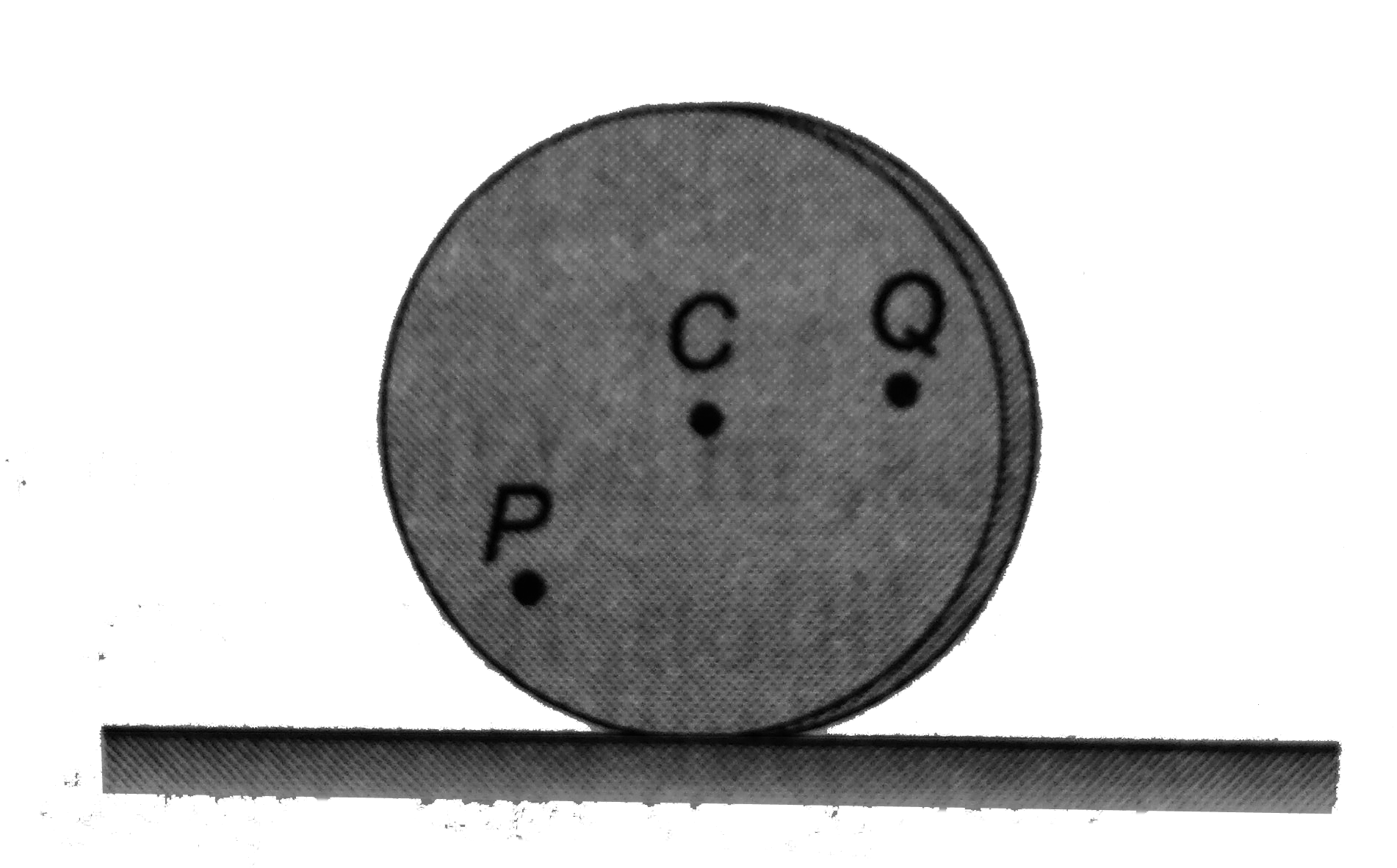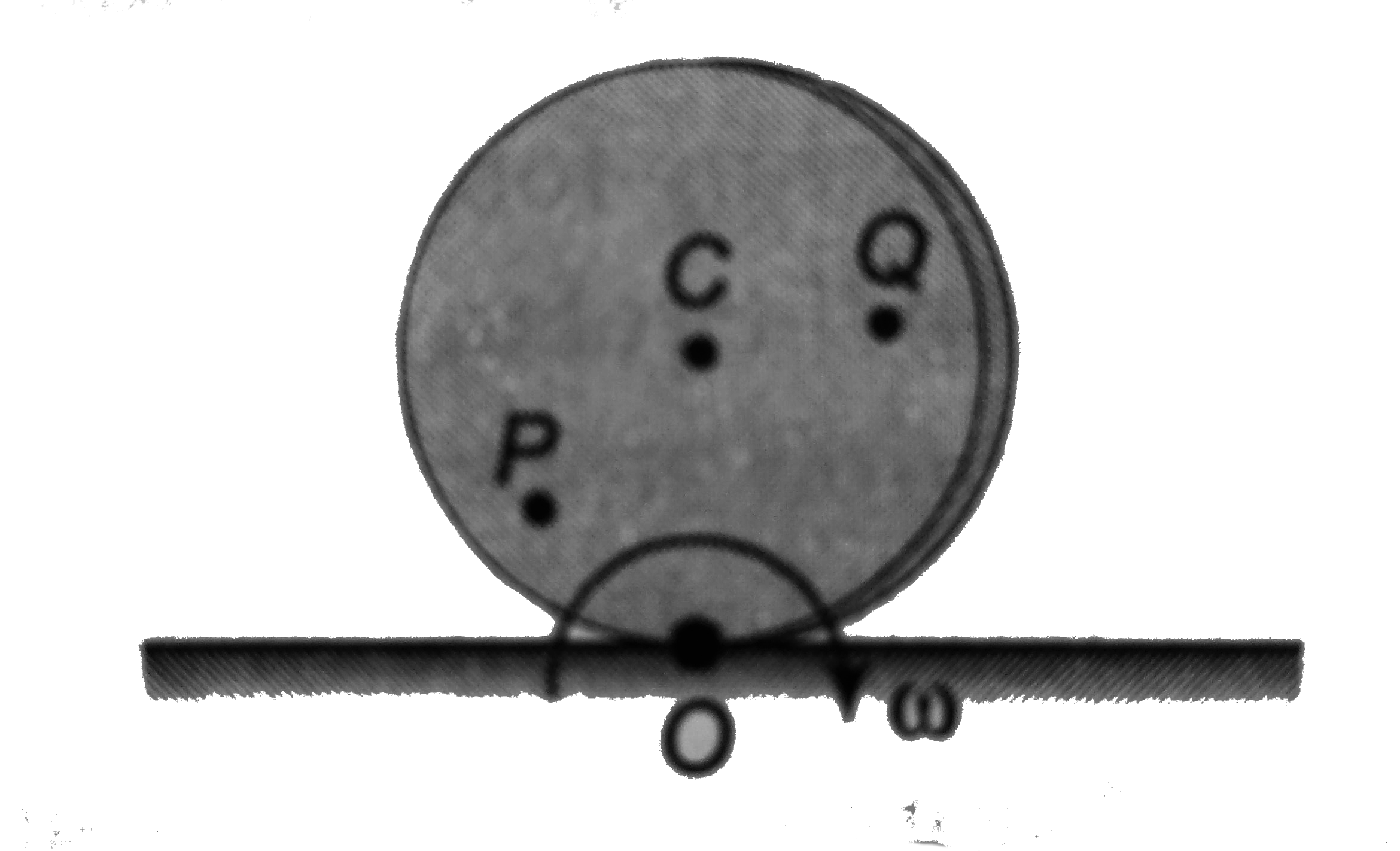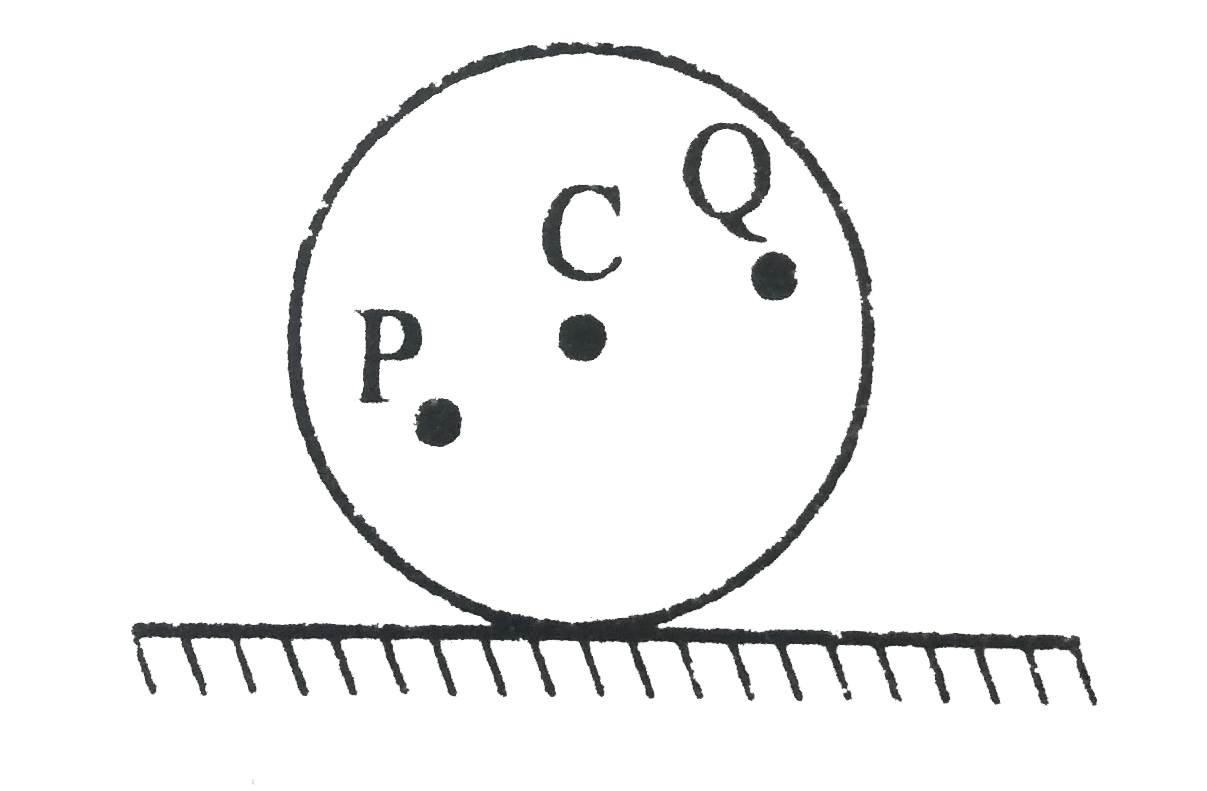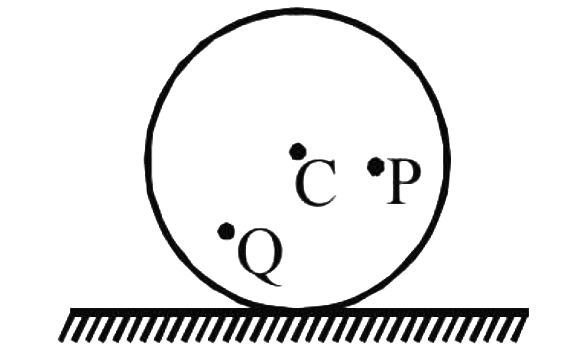
A disc is rolling (without slipping) on a horizontal surface. C is its centre and Q and P are two point equidistance from C. let and be the magnitude of velocities of points P, Q, and C repsectively,
(a).
(b).
(c).
(d).

In case of pure rolling bottom most point in the instantaneous centre of zero velocity.
Velocity of any point on the disc, where is the distance of point from .
Therefore, the correct option is (a).
Topper's Solved these Questions
- BOOK - DC PANDEY ENGLISHCHAPTER - ROTATIONAL MECHANICSEXERCISE - Solved Examples25videos
ROTATIONAL MECHANICS
- BOOK - DC PANDEY ENGLISHCHAPTER - ROTATIONAL MECHANICSEXERCISE - Miscellaneous Examples2videos
ROTATIONAL MECHANICS
- BOOK - DC PANDEY ENGLISHCHAPTER - ROTATIONEXERCISE - (C) Chapter Exercises39videos
ROTATION
- BOOK - DC PANDEY ENGLISHCHAPTER - ROTATIONAL MOTIONEXERCISE - Integer Type Questions17videos
ROTATIONAL MOTION
Similar Questions
A disc is rolling (without slipping) on a horizontal surface. C is its center and Q and P are two points equidistant from C. Let VP,VQ and VC be the magnitude of velocities of points P,Q and C respectively, then
 .View Solution
.View SolutionA disc is rolling without slipping on a horizontal surface with C, as its centre and Q and P the two points equidistant from C. Let vP,vQandvC be the magnitudes of velocities of point P,Q and C respectively, then
 View Solution
View SolutionA disc is rolling without slipping with angular velocity ω. P and Q are two points equidistant from the centre C. the order of magnitude fo velocity is
 View Solution
View SolutionThe root mean square velocity of hydrogen molecule at 27∘C'is'υH and that of oxygen at 402∘Cisυ0, then
View SolutionSum of the first p, q and r terms of an A.P are a, b and c, respectively.Prove that ap(q−r)+bq(r−p)+cr(p−q)=0
View SolutionSum of the first p, q and r terms of an A.P are a, b and c, respectively.Prove that ap(q−r)+bq(r−p)+cr(p−q)=0
View SolutionIn fig.22, ABC is right angled at A. Q and R are points on line BC and P is a point such that QP∣∣AC and RP∣∣AB . Find ∠P.
View SolutionIf pandq are two statement then (p<→~q) is true when : (a) pandq both are true (b) pandq both are false (c) p is false and q ia true (d) Non of these
View SolutionThe molar specific heats of an ideal gas at constant pressure and volume are denotes by CP and Cυ respectively. If γ=CPCυ and R is the universal gas constant, then Cυ is equal to
View SolutionA resistor R,an inductor L, and a capacitor C are connected in series to an oscillator of freqency υ.if the resonant frequency is υr, then the current lags behind voltage, when:
View Solution

